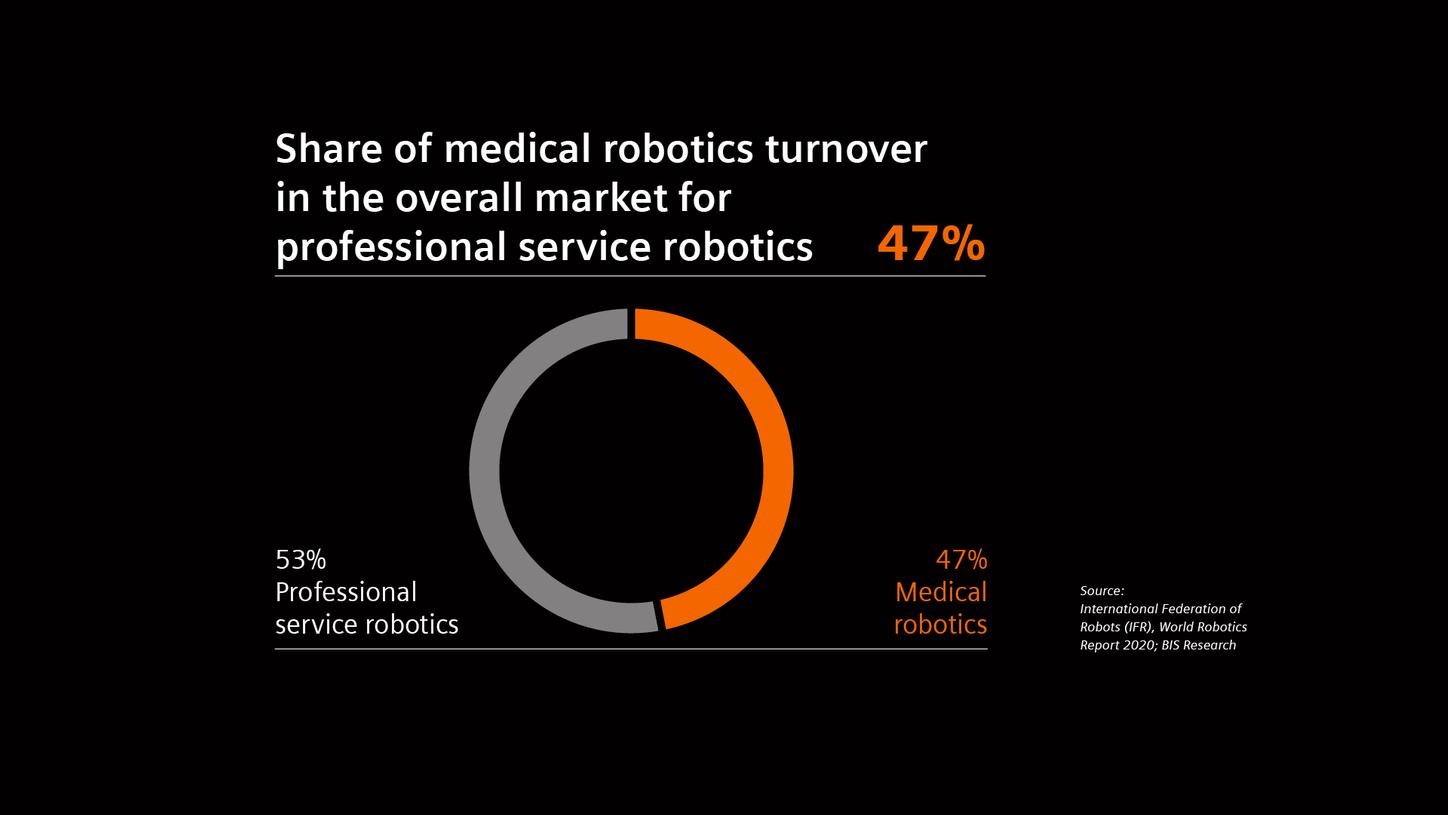Home
Perspectives
- The next frontier in healthcare
The next frontier in healthcare
Utilizing robotics in medicine - a promising trend for the future?
Robotics in healthcare is not about dehumanizing medicine, but about improving quality, safety, and access. Minimally invasive interventions are a case in point. But the trend is much broader.
From manufacturing to the service industriesãÎ


ãÎ and on into healthcare


A broader trend

Not all countries are equal in embracing robotics

Automated and interconnected devices, powered by artificial intelligence and sensing systems, are an important key to optimizing the care continuum and improving clinical outcomes.
Peter Schardt, Chief Technology Officer Siemens Healthineers
The benefits of robotics in hospitals and beyond
But why should healthcare embrace robotics? It comes down to three reasons: better access, improved outcomes, and standardization. The success of the Intuitive Surgical Da Vinci robot in recent years in areas like prostate surgery, cystectomy, and increasingly colorectal surgery, illustrates that surgeons are very aware of the benefits of robotic approaches. This is true not only for conventional and laparoscopic surgery, but also for endovascular interventions.
Building the future of robotics, imaging, and device integration

Your doctor remains in the driverãs seat
But doesnãt the use of robotics come at a cost? Do we not prefer our doctors to be human beings? What if robots cause complications, as happened in the early years of robotic surgery with robots that assisted in hip replacement surgery? How, in other words, should medical and specifically interventional robotics be judged from an ethical point of view? How should robots in any field be judged from an ethical point of view?
Many of the ethical discussions around robotics in healthcare come down to two aspects: risk-benefit assessment and the degree of ãautonomyã of a robot. Regarding autonomy: the robot complements the work of the physician, taking over some tasks and allowing the physician to focus more on clinical decision-making. The robot wonãt ãreplaceã the physician. It is autonomous in that it performs small, precise moves that are better done by a machine, but it always remains an extension of the doctorãs capabilities. The physicians remain in the driverãs seat. They oversee what robotics does at any given time.
When it comes to risk-benefit assessment, it is worth keeping in mind that a robotic system doesnãt simply enter the medical arena. It has to be approved, and it has to thoroughly demonstrate its benefits. This, of course, is not as straightforward as it sounds. Exactly how much responsibility a machine should have is a discussion that will yield different answers in different types of medical disciplines and different kinds of care scenarios. However, there is a fundamental truth: As soon as patient outcomes are better with robotics than without it, it might in fact be unethical not to use it.
Interested to find job opportunities at Siemens Healthineers?
Visit our careers website and check out open positions!
Share this page
Philipp GrûÊtzel von GrûÊtz lives and works as a freelance medical journalist in Berlin. His specialties are digitalization, technology, and cardiovascular therapy.
1 Guang-Zhong Yang et al, Combating COVID-19ãThe role of robotics in managing public health and infectious diseases. Science Robotics 25 Mar 2020: Vol. 5, Issue 40, eabb5589. DOI: 10.1126/scirobotics. abb5589. [Internet]. [Cited February 10, 2021]











